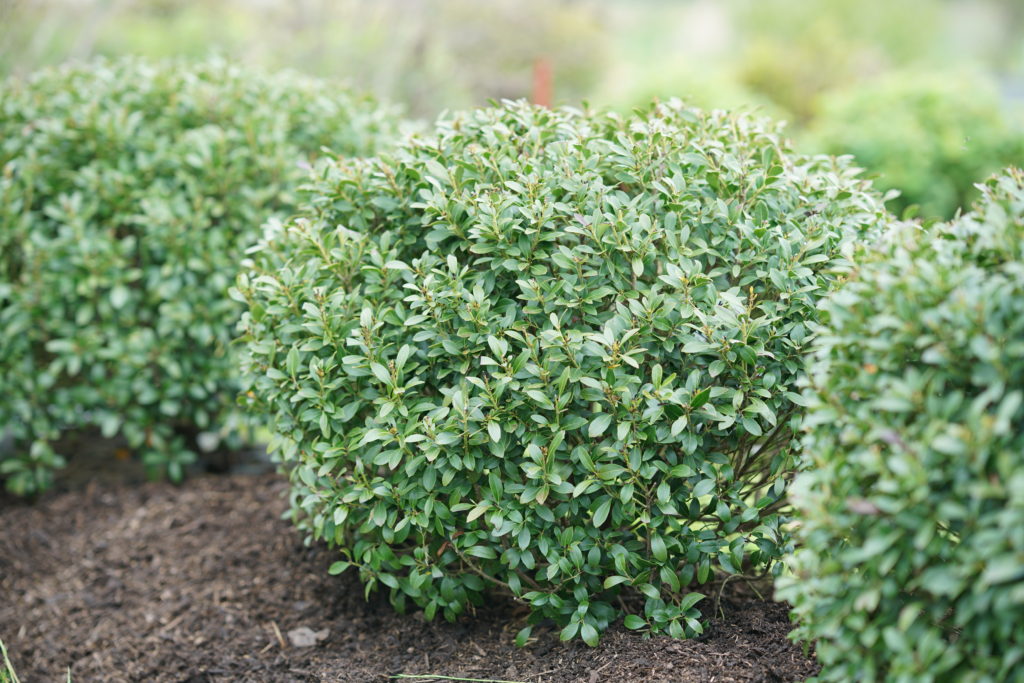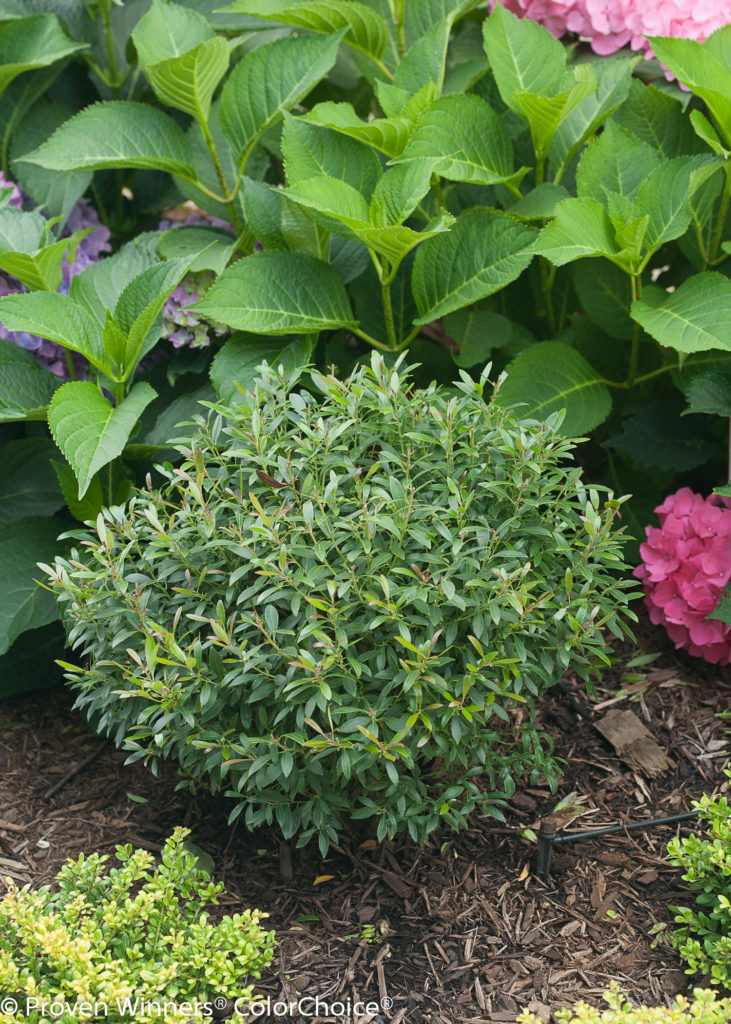Inkberry holly (Ilex glabra) is a slow-growing evergreen shrub (USDA hardiness zones 5-9). This U.S. native hale from coastal Canada south to Florida, and west to Louisiana. Commonly, inkberry (the species) grows to 5-8 feet tall. It is at home in sandy woodlands and the edges of swamps and bogs where they form colonies via root suckers.

Two new varieties from Proven Winners® and Spring Meadow Nursery are Strongbox® and miniature Gem Box® , both growing only (24 – 36 inches tall and wide). Ideal for container planters! Strongbox shape is abit squat at the top than Gem Box. Utilize both as boxwood substitutes if you’re concerned about boxwood blight disease. Both varieties are densely branched with a low compact growth habit; they may lightly root sucker.
Inkberry hollies are undemanding., growing in average, medium to wet, acidic soils, and in full sun to part shade (4 hours minimum). It is one of few hollies that tolerates wet soils. Inkberries are dioecious, either male or female tiny white flowers. Black drupe (berry-like) fruits develop in the fall and persist through winter unless consumed by birds and other wildlife.

Inkberry hollies are popular hedging shrubs. Prune in early spring before new growth begins. Gem Box and Strongbox cultivars rarely need much pruning. Remove root suckers if undesired.
Inkberry is highly resistant to insect or disease problems, and winter burn. Leaf spotting occurs in wet summers. Spider mites may appear, especially during dry weather.
Fertilize in spring with an acidic water soluble fertilizer such as Holly-Tone® or Miracle-Gro® In high pH (alkaline) soils, foliar chlorosis (yellowing) may occur. Spider mites may appear, especially in dry conditions.
Mass or group several inkberry hollies as a shrub border or as a low foundation planting. Species inkberries will naturalize in moist woodland gardens or near streams or ponds.

 Posted in
Posted in 
